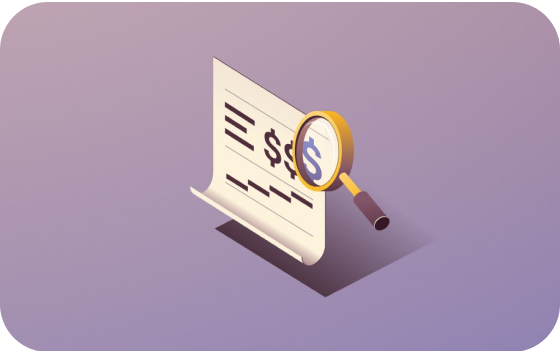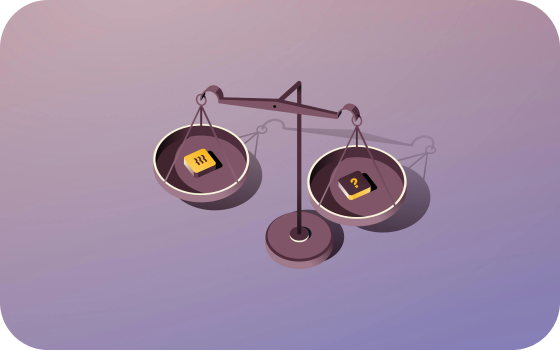Form W-4, Employee’s Withholding Certificate, is a document that employees in the United States fill out to indicate their tax situation to their employer, allowing the employer to withhold the correct federal income tax from the employee's paycheck. This form helps ensure that the correct amount of taxes is withheld to avoid underpayment or overpayment of taxes throughout the year.
Form W-4 vs. Form W-2
Form W-4, Employee’s Withholding Certificate, is used by employees to inform their employers of their tax situation to determine the amount of federal income tax withholding to deduct from their paychecks.
Form W-2, Wage and Tax Statement, is provided by employers to employees and the Internal Revenue Service (IRS) at the end of the year to report annual wages and the amount of taxes withheld from their paychecks.
What is Form W-4 used for?
Form W-4 is used to determine the amount of federal income tax to withhold from an employee's paycheck. This helps ensure that the correct amount of taxes is withheld throughout the year, which can help employees avoid significant tax liabilities or refunds when they file their annual tax return.
Who uses Form W-4? When?
Employees use Form W-4. You should fill one out whenever you start a new job, and revisit it or fill out a new one when your financial or personal situation changes, such as marriage, divorce, the birth of a child, or a change in income.
How often do you need a Form W-4? Does it expire?
The IRS recommends filling out a new Form W-4 each year, but it doesn’t expire and this is not a requirement. However, it’s a good idea to revisit it periodically to make sure your withholding information for the current year is up-to-date.
Having an inaccurate W-4 means you could over- or under-pay your withholding tax throughout the year. If you overpay, you just get a refund of the additional amount you paid after you file your tax return, which isn’t usually a big deal to most people (though it does mean you gave the government an interest-free loan for part of the year). If you underpay, on the other hand, it means you’ll owe more tax when you file your return—and you may even owe penalties or interest.
When not to fill out a Form W-4
Employees should not fill out a Form W-4 if they are nonresident aliens not subject to U.S. income tax withholding or if they are not employed.
You may also not fill out a Form W-4 if you have additional income you don’t want your employer to know about. However, you’ll still need to report your income to the IRS and make quarterly estimated tax payments to avoid penalties.
What do you claim on a Form W-4?
On Form W-4, you can claim allowances, additional withholding amounts, and adjustments for multiple jobs or working spouses to tailor the amount of tax withheld from your paycheck.
How long does it take for a Form W-4 to go into effect?
Typically, a new Form W-4 goes into effect within one to two payroll periods after it is submitted to the employer, depending on their payroll processes. If you already have a Form W-4 on file and submit an adjustment or revision, by law, your employer has 30 days to process it.
How to fill out a Form W-4
There are five steps to filling out a Form W-4, including one that’s optional. Here’s what to do:
- Step 1: First, enter your personal information, like your name and address, your social security number, and your marital status. In this section, you’ll also describe your tax filing status, or how you file your taxes (single, married and filing jointly, married but filing separately, etc.). If you’re a single filer with a simple tax situation (one job, no dependents, and no tax credits or itemized deductions), you can skip the next steps—you just need to sign and date the form, and you’re done.
- Step 2: Account for multiple jobs or a working spouse by telling your employer if they should withhold more or less than the standard amount. If you have multiple jobs or you and a spouse both work and file your taxes jointly, you typically only fill out a W-4 for the highest-paying job, but follow the instructions below to make sure:
- Option A: Use the IRS’ online Tax Withholding Estimator.
- Option B: Use the Multiple Jobs Worksheet, located on Page 3 of Form W-4. This is a paper version of the Tax Withholding Estimator.
- Option C: If you have multiple jobs to report that have similar incomes, check box 2(c) to indicate this—but be sure to do the same thing on the W-4 for the other job.
- Step 3: If you plan to take the Child Tax Credit or any other tax credits for dependents, indicate your number of children and dependents. Multiply the number of children under age 17 by $2,000 and other dependents by $500. Add the total dollar amount to Line 3.
- Step 4: Add other adjustments, if you’d like. This step is optional.
- Line 4(a): Enter any non-job income you expect to earn that isn’t subject to withholdings; for example, from retirement accounts or self-employment income.
- Line 4(b): Fill out this section if you plan to itemize your deductions and want to reduce your tax liability. To estimate your deductions, use the Deductions Worksheet on Page 3 of Form W-4.
- Line 4(c): Instruct your employer to take extra withholding from your check each pay period, if you want to pay more tax.
- Step 5: Sign and date the form.
How to claim exemption from income tax withholding
Some people are eligible for a complete exemption from federal income tax, meaning no income tax would be withheld from their wages (though Social Security and Medicare taxes still would be).
To claim exemption, complete steps 1(a) and 1(b), then write “Exempt” on your Form W-4 in the space below Step 4(c). Then complete step 5 by signing and dating the form.
Who can claim exemption from income tax withholding?
To claim exemption from federal income tax withholding, an employee must certify that they had no tax liability in the prior year and expect none in the current year.
Having no tax liability typically means that your income was so low you weren’t required to pay income taxes. For the 2023 tax year, that generally means earning less than:
- $13,850 for single filers and those married filing separately
- $27,700 for those married filing jointly or qualifying widow(er)
- $20,800 for head of household
How to adjust a Form W-4
At any time, you can give your employer a new Form W-4 to adjust your withholdings.
- To have more taxes taken out of your paycheck: Reduce your number of dependents or add an extra withholding amount to Line 4(c).
- To have less taxes taken out of your paycheck: Increase your number of dependents, reduce the number on Line 4(a) or 4(c), or increase the number on Line 4(b).
Who should adjust their Form W-4?
If you got a big refund or tax bill, it might be a good idea to adjust your W-4 to more accurately calculate your withholdings.
Additionally, it’s a good idea to fill out a new Form W-4 if you:
- Start a new job.
- Start an additional job (or your spouse does).
- Get married.
- Get divorced.
- Have a baby or adopt a child.
How to file a Form W-4
Employees should complete Form W-4 and submit it to their employer's human resources or payroll department. The employer will then adjust the withholding based on the information provided and handle filing payroll taxes on their employees’ behalf.
Frequently asked questions about Form W-4
Still have questions about the Form W-4? Learn more in the FAQs below.
Where do you get a Form W-4?
Employees can obtain Form W-4 from their employer or the IRS website, irs.gov.
Is Form W-4 for state or federal taxes?
Form W-4 is used for federal income tax withholding. States may have their own separate withholding forms for state income taxes.
Is Form W-4 only for full-time employees?
No, Form W-4 is used by all employees, including full-time, part-time, and temporary workers.
What if an employee doesn’t submit a Form W-4?
If an employee does not submit a Form W-4, the employer must withhold federal income tax at the highest rate, as if the employee is single with no adjustments.
Has the IRS made any changes to Form W-4?
If it’s been a while since you’ve filled out a Form W-4, there have likely been some changes. This is because of the Tax Cuts and Jobs Act (TCJA), the 2017 tax law that overhauled tax rates and rules. The biggest change it made that affected Form W-4 is that it eliminated personal exemptions. Taxpayers used to be able to calculate a number of allowances to deduct from their total income to reduce their tax withholdings. But now, the allowances worksheet is gone from the tax form, and taxpayers who used to use personal exemptions have to use the standard deduction instead.
Do IRS changes mean employees need to fill out a new Form W-4?
Employees do not need to fill out a new Form W-4 if they have an existing form on file—unless they want to adjust their withholdings for any other reason. However, it’s always a good idea to review and update Form W-4 regularly to make sure your withholdings are accurate.
Disclaimer: Rippling and its affiliates do not provide tax, accounting, or legal advice. This material has been prepared for informational purposes only, and is not intended to provide or be relied on for tax, accounting, or legal advice. You should consult your own tax, accounting, and legal advisors before engaging in any related activities or transactions.









































































































